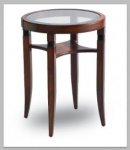Add a spot channel for the shadows. Just be sure to not name it "Black" or "Process Black," because Indesign interprets these as being process black instead of a spot ink (useful for duotones), and won't place the file. The special names are case-sensitive, so you could name the ink "black." Care must be taken to make sure there is not unwanted overlap of the images because the spot channel is completely independent of the composite channels. It could be helpful to make the color of the spot channel a bright saturated color at some point in the editing process for previewing all channels simultaneously. If the color of the ink is changed back to black, Photoshop will automatically rename the channel "Black," so you have to change it again. If you have a lot of existing images that are RGB, you could probably make a Photoshop action to convert in a batch process if the shadows are all on their own layer and the layer is consistently named.
Before placing any of the images with the spot ink in Indesign, add a swatch to Indesign named "black" or whatever ink name is used in the images. Set it to be a spot swatch, with the alternate color space CMYK with values 0/0/0/100. This prevents Indesign from picking up the color of the spot ink from the links, which would be defined as Lab or RGB and wouldn't convert to straight black. If any images are already placed and you don't want to start over, create a new 0/0/0/100 spot swatch and map the ink from the images to it with the ink manager. You cannot convert the spot to process or alias it to process black and keep the spot black-ink-only, as Indesign will substitute the alternate color embedded in the image which at best would be RGB or Lab black.
Export a PDF with the spot ink preserved, then use Acrobat's "Convert Colors..." to convert the spot to process, or do it in your RIP. If you created a spot swatch before placing any images, the alternate color will be picked up from what you defined in Indesign (0/0/0/100), and Acrobat will convert the spot ink to be black ink only. Even though the image is encoded as a single NChannel image, Acrobat seems to do a decent job of combining the two blacks into one. This only works if you are converting the RGB to CMYK when exporting the PDF. If the composite image is left RGB in the PDF, there will be an RGB image with an overprinting spot image on top instead of a single NChannel image, and Acrobat will convert the spot image to CMYK with empty cyan, magenta and yellow. This will render the overprinting attribute useless, since the image now has cyan, magenta and yellow (even though they are empty). Your only chance then would probably be to change the blending mode of the shadow images to multiply with Pitstop, or try doing the spot conversion in your RIP.
This is all based on CS3 and Acrobat 7 behavior. Some of the workarounds may not be necessary with CS4 or a newer Acrobat version.
Alternatively, if the shadows are on consistently named independent layers, you could probably use a Photoshop action list to convert everything to a particular CMYK profile while making the shadows straight black.














